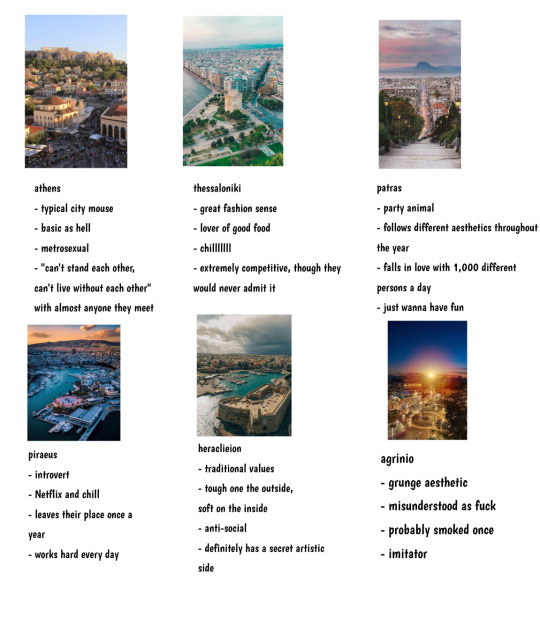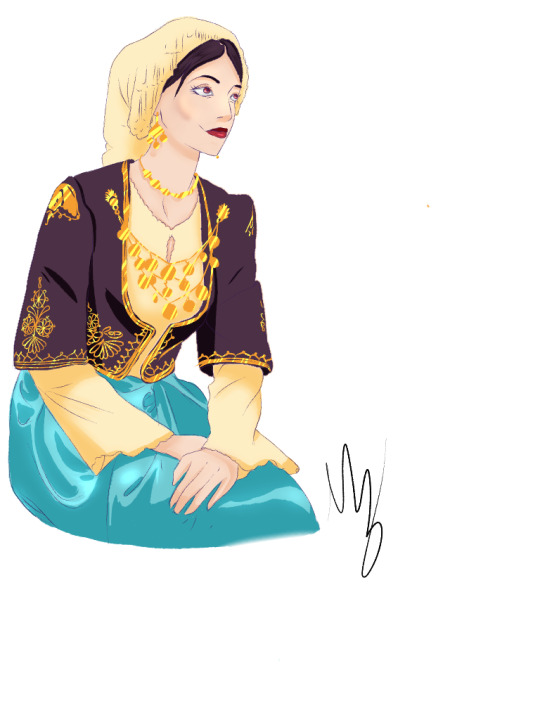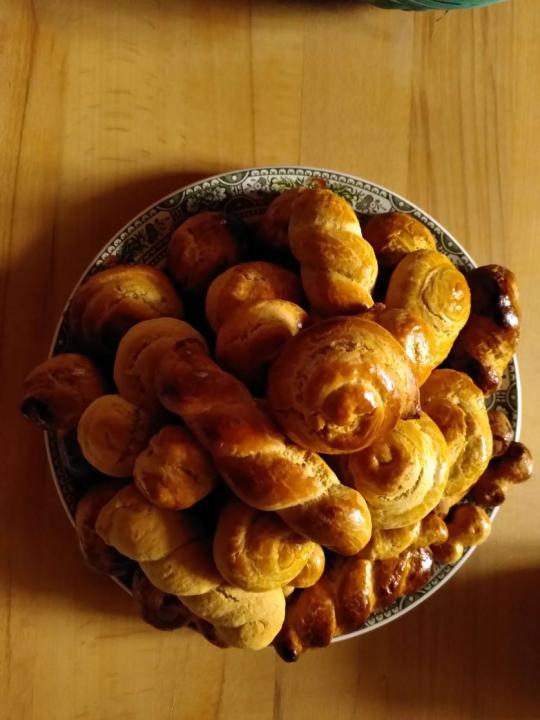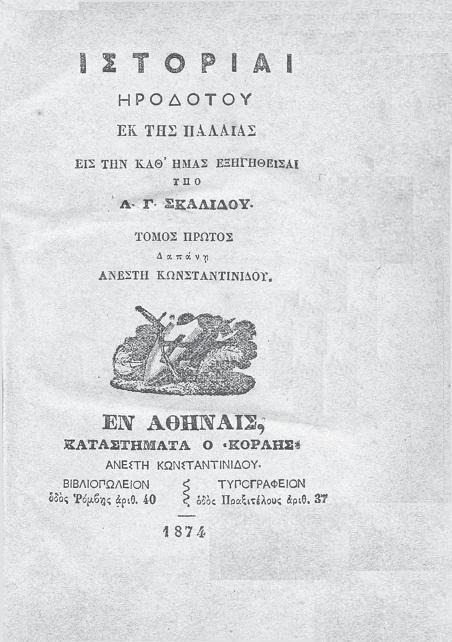#modern greece
Text
And that's not the only place in Greece where it's like that 😬
107 notes
·
View notes
Note
Hi!
I have a ask about women's clothing and I'll be linking examples of where I found the information, just in case anyone wants to check it out. Also, this is going to be LONG, so thank you in advance for taking the time to read and respond!
From what I saw, not all Greek women stayed at home, especially those from families whose social class was not high enough for the man in the family alone to be able to afford everything. Among those who did not stay at home, a certain number collaborated with farmer activities such as taking care of crops and animals. When it comes to more recent times, it's easy to find some black-and-white photos of these women farmers (in fact, it's easy to find this type of photo of women working in rural areas in several countries precisely because it's not from such a distant time and now we still have current photos because some areas are still rural). In all the ones I've seen so far, they still wore skirts/dresses, but above the ankle instead of covering their feet.
When it comes to even more ancient women, from Ancient Greece, I have seen female representations with short dresses, but they were short above the knee and generally it was more Atalanta or Artemis (In the case of Artemis, this is accentuated even in written sources), who are huntresses and not farmers. Apart from them, I have seen representations of Amazons in short dresses, but again they're warriors and not farmers. I thought about looking for something about this in Demeter, since she's a goddess related to agriculture, but all the representations I found of her show her wearing long dresses that cover her feet (that is, even longer than those of women who have the length above the ankle) and I don't know if this is more because she's a goddess and in the end these representations are still of a deity and not of a civil human woman, or if this would be an accurate representation of farmer women. After all, Athena is a goddess of war and that doesn't mean that her symbolic image is wearing a short dress although the armor is present. Regarding civilian women farmers, I didn't find anything on the subject.
I would like to know if we have any information on how women used to dress to carry out activities! Was it a dress above the ankles like the women in the B&W photos? A shorter version, though perhaps not as short as huntresses and warriors? Is it the same style of long dress we usually see? Is it the usual long-style dress, but tied in a way to improve practicality? Do we, in the present, not have this information?
The only thing I found involving farm clothing was the use of a hat for protection (petaso, I think? Also, I saw that petaso was used by both genders). I also saw that they already had a type of boot (for example, this. The boot in this image was even found among a woman's belongings) although I didn't see if it was used by farmers. Most of the other images are of men, so they doesn't answer much about women farmers.
And that's it! Sorry if it's a question you've already answered, but I searched the blog and didn't find anything related (but we know how Tumblr is when it comes to navigation sometimes, so I can't rule out the possibility that you've already answered it).
Hello! Your research was thorough and led you to accurate conclusions.
Peasant women engaging in strenuous physical activity wore shorter dresses because long dresses touching the ground could be a serious obstacle in their work. Further back before the invention of photography, a lot of Greek folk dresses were above the ankle and the shortest ones could even be almost knee-length, however women typically wore them with tall thick woolen socks. It is no surprise that such folk dresses can be observed in mountainous rural areas, in the rural northern mainland or in the rural areas in the islands, whereas urban traditional dresses or dresses from generally prosperous regions were longer. I would say however that most folk dresses were overall a little shorter than what fashion in the west dictated during the same eras. Even a typically long Greek dress sometimes is above the ankle or exposes part of the feet. This was another matter of practicality; Greece has a very rugged terrain everywhere, meaning that too long dresses would get dirty very quickly or make women trip over all the time.

Examples of short (Metaxades), standard (Tegea) and long folk (Tanagra) dresses.
A little known funny fact is that western travellers and explorers of Greece in the 18th and 19th century were often scandalised at the sight of those "short" dresses and women's ankles or shins. There are manuscripts of Western European explorers mocking those outfits or questioning the morality of the women who wore them. I remember reading one spitting fire because the women didn't even wear socks under the dress (if memory serves me correctly, it was about peasant islanders who worked in the hot weather and close to water, obviously wearing tall thick socks would be both inconvenient and torturous). Unfortunately I can't provide precise links, it was something I read about a year ago and I am not sure, but I think it was when searching info about specific dresses but I can't remember about which one it was.
Meanwhile in Greece, while staying covered was a sign of modesty and propriety, I don't think showing some skin under the knee was that big of a deal anyway. Men were certainly not fainting at the sight of a bare ankle XD As for the late 19th and the 20th century, after the invention of photography, like these images you have, it wasn't a controversial issue. Women could wear dresses above the ankle and be sockless as well if there was good reason for it. The photos you have provided are in fact from the 50s - 60s, a time when other Greek women who didn't work in the salt pans or the fields were favouring mini dresses and skirts for their night out.
The length of a dress in Modern Greece wasn't all that derived by ancient Greek fashion standards but rather common sense and similarity to other nearby nations. The similarity between Ancient and Modern Greece in this aspect is founded simply on the common need for practical outfits when working hard. I mean, modern Greek peasants did not wear shorter dresses as part of their Greek heritage but because this is what it made sense to do.
Ancient Greek female peasants did wear shorter outfits resembling the men's chitons, when their work dictated it. However, wearing short clothing was associated with being a man. A short outfit on a woman was a telling sign the woman had no choice but to work hard in the field like a man. Low class prostitutes also wore short chitons to expose themselves more and attract customers. Women who engaged in sports wore them too but only in the presence of other women. A short outfit was only chosen out of necessity and it wasn't a very respectable way to dress yourself, unless you were from Sparta, where it was more common (besides, the Spartan lifestyle was such that women exercised a lot and spent more time with other women). Young maidens in search of a husband sometimes wore shorter dresses but once a woman was married she was supposed to wear long peplos touching the ground, unless they were desperate enough to work in the fields.
As for Artemis, Atalanta and the Amazons versus Demeter and Athena: the former three had chosen a lifestyle greatly resembling a man's lifestyle. Artemis and Atalanta were what one can call "tomboys" recoiling at the prospect of marriage and they were huntresses. They are portrayed and imagined in such a way to accentuate their intent to live a life like a man's. (Atalanta did eventually get married but she was a total tomboy, participating in sports competitions with men before this.) The Amazons were warriors who had banished all men from their society, taking their place in doing all the conventionally masculine things, hence the dress code.
Demeter was a goddess comfortable in her femininity. She did not live a man's life and although she was the goddess of nature and the harvest, she did not do farmer work. She used her divine powers for anything that she needed to get done. Athena is an interesting case. Although she was a sworn virgin like Artemis and a goddess of war (what's conventionally more masculine than this, right?) her hem always touches the ground. The reason is that there is no indication Athena was not comfortable in her femininity. Like a priestess, she was a feminine virgin disinterested in lust and sexual gratification. She was dedicated to all things spiritual and intellectual; this was also her divine intervention in war. She wasn't goddess of the physicality and brutality of war like Ares was, she was the goddess of strategy, tactics and rightful defense. There wasn't tomboiness in her, only disinterest in sex. But she too had a feminine vanity in her (see Paris and the apple). Of course Athena was also the goddess of arts, sciences and all feats of the human mind. Perhaps this shows that it wasn't considered exclusively manly or masculine to be wise or intellectual. But I digress. In any case, despite their similarities and Athena's divine control over combats, Artemis had more masculine mannerisms than she did.
In short, there were three main reasons a Greek woman would wear a short dress in ancient times: rough work outside due to destitution, vulgarity or desire for a more conventionally masculine lifestyle. In modern times, it was a matter of practicality above all else. However, after 1880 I would say it was progressively becoming less and less of a deal to show skin below the knee.
Lastly, hats and shoes were not gendered garments. Boots absolutely existed in Ancient Greece, they were used when they were more convenient for certain activities than the sandals and when the weather was very cold. Hats were also practical until the Roman period, when ladies sometimes also wore fancy hats for aesthetical purposes.
#greece#europe#fashion#ancient greece#modern greece#greek culture#traditional dress#folk dress#historical fashion#babyrdie#ask
43 notes
·
View notes
Text
Tag yourself modern Greek city edition

Tagging: @alatismeni-theitsa, @sugaroto, @gemsofgreece, @margaretartstuff, @kebriones, @purple-amaranthe, @redhatmeg, @istadris
#tag meme#tag yourself#greece#modern Greece#greek cities#athens#thessaloniki#patras#piraeus#heraklion#agrinio
142 notes
·
View notes
Text

I promise I will add background one day. Until then, enjoy this lovely Cretan lady.
#crete#cretan woman#traditional outfit#greek traditional outfit#greece#modern greece#digital art#artist on tumblr
16 notes
·
View notes
Text

I made koulourakia for Easter which I am informed are Greek Easter biscuits?
There is a claim that the shape of these biscuits goes back to Minoan times but I didn't find any evidence for this aside from a fresco showing round shapes in a basket that are also interpreted as fruit. Also, I am always doubtful of claims of continuous traditions, even though I am sure the Minoans had their own versions of cakes and biscuits.
I used this recipe:
250 g butter
250 g sugar
13 g baking ammonium
130 ml lukewarm milk
4 eggs
1 tsp ground vanilla
Zest of 1 big or 2 small oranges
1 kg white flour
2 egg yolks + 1 tbsp of water for the eggwash glaze
Remove the butter from the fridge and cut into pieces so it more quickly reaches room temperature.
Mix the butter and sugar for about 10-15 minutes, until the butter is creamy and fluffy.
In the meantime, heat up the milk until it is lukewarm, then remove the pot from the heat. Add the ammonia and whisk until fully dissolved. Set aside.
Add the eggs one at a time to the sugar-butter-mixture, allowing time for each one to be absorbed, before adding another. Then add the the vanilla, the orange zest and the ammonia milk and blend well. Finally, combine with the flour, a table spoon at a time, until the dough is soft and not too sticky.
Cover the dough and let it rest for 30 minutes.
Shape the koulourakia with your hands, giving them any shape you like: Just pinch off a small ball of the dough (approx. 3 cm in diameter) and roll it into a rope. Twist them into braids, fold them into a vulva boat, roll them into an S or into a spiral: the sky is the limit.
Line a large baking tray with parchment paper and place the koulourakia on it, leaving some distance between them as they will rise a lot while baking. It will take 4-5 baking trays to bake them all.
Whisk the egg yolks and 1 tbsp of water in a small bowl and brush the top of the koulourakia for a beautiful glaze.
Bake in a preheated oven at 200°C/400°F using the hot air fan for 12-20 minutes (depending on your oven), until fully cooked and golden brown on the outside.
Enjoy!!! ☕
47 notes
·
View notes
Text
man I keep learning crazy shit about my grandma. appearently, the Greek junta started during her tonsilectomy, when she was 12 years old. she was awake but with regional anaesthetic, and all the doctors just left her mid-surgery to see the tanks and soldiers pass through the buildings. meanwhile, she decided to get up and fucking wander around the hospital. she then proceeded to nearly die of bleeding before she was found by the doctors
6 notes
·
View notes
Link
There are a number of Greek mythology books and Greek myth retellings on the market, and I’ve read quite a few of them. From the classicist Madeline Miller’s Song of Achilles to Rick Riordan’s Percy Jackson series, I’ve been through list after list of popular fiction. I’ve even meandered through Devdutt Pattanaik’s retelling and attempt to connect Greek myths to Indian mythology.
And while many of these stories can be fun and exciting, there’s something missing from 99% of the Greek retelling booklists—actual Greeks.
#greek mythology#greek myth retellings#greek myth#greek retellings#literature#translation#books#international books#book#booklist#book list#modern greece#greek authors#retellings#fiction#persephone#ariadne#odyssey
61 notes
·
View notes
Text
70 notes
·
View notes
Text
I got to say as Greek people, we need to accept that the obsession most non-Greek white people have with our ancestors isn’t good for us. Because you can pick through any group of white book nerds to find one of them with a fixation on the works of Sappho, Euripides, and Aristophanes, but try getting them to know any bit of Greek history that happened after the Fall of Constantinople and they will look at you like you asked them to grow a third eye. Like there’s a reason that when you go to a university you have a decent chance of finding a “Classical Greek” language course but are shit out of luck in finding anything about what modern Greeks actually speak.
Its because white non-Greeks think of our culture as something that has been dead for centuries, not a living, breathing facet of our lives. If modern Greeks are mentioned at all, we solely exist as either background characters to their holiday vacation, or as a mass of ignorant under-classed labor robbing the EU of money.
Like just because white non-Greeks will fawn over our ancestors and the stories they told, does not mean they will actually treat us with any modicum of respect or decency. Because at the end of the day, we mainly exist in the white Western imagination for the supposed legitimacy our ancestors gave to the West. They cling to our ancestors’ culture, their scientific advancements, their admitted superiority complexes over other cultures, and their state building to justify and emblazon their own. Any aspect of our history that doesn’t help fuel their ego over a white European identity is discarded.
I have also made it a point to specify white non-Greeks because it is in the service of whiteness that this is all done. Because ancient Greek culture has been shoved at colonized people for centuries as one of many supposed reasons for why white people and an imagined homogenous white culture are better than them. So, the relationship colonized people have with our ancestors’ culture, especially those who are currently living in Greece and facing constant oppression from both the state and white Greeks at large, is not at all the same as white non-Greeks relationship to our ancestors’s culture.
So to end this post, the way Greek people’s ancestors are propped up and obsessed over in the West, neither provides modern-Greek people with respect by white non-Greeks, or is without violence of its own against colonized people. It doesn’t mean that our ancestors don’t deserve to be thought about or studied, or that white non-Greeks are bad for doing so, just that we need to accept that most white non-Greeks relationship with our culture is not the net positive we tend to think it is.
#greece#greek politics#ancient greece#modern greece#politics#periphery#europe#western culture#western civilization
35 notes
·
View notes
Text
The Greek island lost to time – where women rule the roost
3 notes
·
View notes
Text

Perhaps the first adaptation of Herodotus’ Histories to modern Greek (1874).
Source: https://www.gutenberg.org/files/38055/38055-h/38055-h.htm
1 note
·
View note
Text
#that's a nice type of categorisation#tourism#modern greece#tavern#greek cuisine#restaurant#food#foodie
29 notes
·
View notes
Text

Théodore LeBlanc - Women from the Peloponnese in a makeshift tent, c.1828
0 notes
Text
Greecetours brings your dream to reality

Athens, the heart of ancient and modern Greece, is a city that pulsates with history, culture, and vibrant energy. Steeped in mythology and adorned with architectural marvels, Athens offers a compelling blend of the past and the present. Read more:- https://www.greecetours.com/greecetours-brings-your-dream-to-reality/
0 notes
Text
Σχετικα με το tag post μου, έχω παρατηρήσει αρκετούς να ενοχλούνται για την επιλογή του Αγρινίου. Ομολογώ πως το τοποθέτησα, γιατί έχω καταγωγή από εκεί (από την πλευρά της μαμάς μου συγκεκριμένα)
Επισης, σχεδιάζω να κάνω και 2ο ταγκ και με άλλες ελληνικές πόλεις, οπότε μπορείτε να μου προτείνετε ιδέες και μερικά στερεότυπα για αυτές, αλλά να μην είναι πολύ προσβλητικά, εντάξει;
0 notes
Text
doing ancient Greek class today and the class is discussing about the first known drugs being used in ancient Greece. love my country's beautiful culture, glad Thessaloniki residents and politicians are staying true to our traditional values <3
0 notes